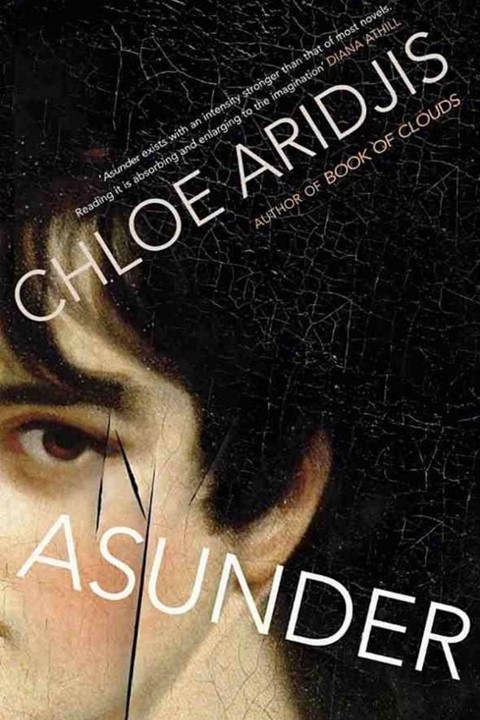Tish Wrigley interviews Chloe Aridjis about her new novel Asunder.
From the outset, both the reader and Marie, the protagonist of Chloe Aridjis’ second novel Asunder, are struck by the notion of craquelure – the fine pattern of dense cracks that forms on the surface of painted objects as part of the ageing process. It represents the inevitability of decay, and the toppling of order; the only creeping strain of disorder in that most controlled of environments, the museum.
Marie’s life is an exercise in introspection and disassociation from the disorder of the real world. Driven by a desire for calm and conformity, she has paced the art papered rooms of the National Gallery for nine years, revelling in the peaceful boredom her job as a warder entails. In the evenings she creates macabre still lives of her own, using dead moths as the protagonists in miniature landscapes formed from the curve of an egg. Life is quiet, stifling; yet as we meet her, craquelure – the inevitable fate of the masterpieces she protects – is taking place within her world, and disorder begins to protrude through the gaps. The members of her tiny and ordered social circle start to interact, and her emotions, set adrift from their stringent moorings, begin to swirl, with the life and energy that has been thrumming beneath the surface threatening to burst out. In masterful style, Aridjis has woven a tale of breathless calm punctuated with vignettes of disquieting violence, exploring history, fear, anxiety and notions of femininity in exquisitely phrased metaphors and languorous, unassuming prose.
"In masterful style, Aridjis has woven a tale of breathless calm punctuated with brief vignettes of disquieting violence"
Here we speak to the author about the ideas that drove the novel, feminimity in art, history and novels and a passion for museums that she has shared with her heroine.
Asunder can be seen as a story of internalisation, a woman battling for passivity in a world that uncontrollably cracks into violence. Would you agree?
It's actually more about her slow revolt against passivity, both in her profession and beyond. At first she is content with the calm afforded by her job at the National Gallery but as the novel progresses, she becomes increasingly restless and begins to relate more and more to individuals who break social boundaries and transgress. She herself experiences many small stirrings of violence that finally, towards the end, find an outlet. The narrative is what they call a slow burn, which happily has been appreciated by readers not searching for comic book "plot".
The notion of her femininity hangs, looms in the balance, over the head of Marie - what was important about this question?
All day long she is surrounded by painted women, for the most part beautiful, while she herself is nearly invisible in her grey uniform. And her great grandfather's fascination with the suffragettes was passed on to her at an early age yet is wrapped in ambivalence (would she have tried to stop their attacks on paintings, she wonders, or let them make their dramatic statement?). Later, in Paris, she discovers a book showing photographs of Charcot's famous hysterics and, in a ghostly way, identifies with them too. To her, femininity has become something almost theatrical, and she is both drawn to the idea and terrified.
Is the passion for the peace of museums one you share with your heroine?
Definitely! Museums and libraries have been my salvation. (That said, museums have been known to trigger all sorts of pathologies in individuals, even psychosis).
How much of this was a London novel? Outside of the museums, what was key about the capital that made it the location of choice for this book?
It is, to a large extent, a London novel, but as with Berlin I tried to create a slightly parallel universe that resembles the real one yet is a few degrees off kilter. More than anything I chose the capital because this is where the National Gallery is located and this is where I happen to live, but in writing about it I came to see certain corners in a new light.
What are you planning next?
I have begun work on the next novel, which is set in Mexico in the late eighties, just as the country began its slide into the economic recession and drug cartel driven violence from which is has yet to recover. The story will feature a teenage girl, a ruined aquarium designer and a troupe of Ukrainian dwarfs.
Asunder is out now, published by Chatto & Windus.
Text by Tish Wrigley
